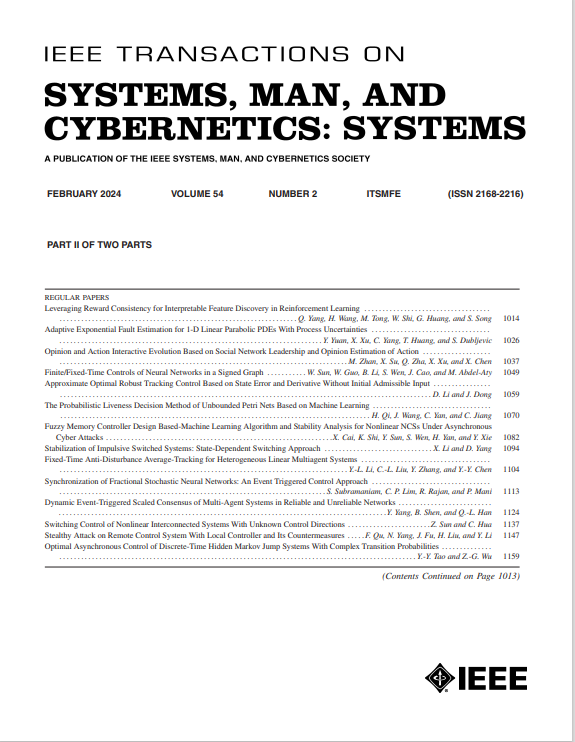Multichannel-Based Multiview Shallow Fusion for Time Series Classification and Its Application in Fault Diagnosis
IF 8.6
1区 计算机科学
Q1 AUTOMATION & CONTROL SYSTEMS
IEEE Transactions on Systems Man Cybernetics-Systems
Pub Date : 2025-03-25
DOI:10.1109/TSMC.2025.3548662
引用次数: 0
Abstract
In the current time series classification (TSC) field, shallow concatenation, deep fusion, and hybrid ensemble multichannel frameworks (MCF) represented by convolution-based, deep learning, and hybrid methods have achieved competitive TSC performance. However, the massive kernels, deep fusion, and heterogeneous ensemble mechanisms, which are the core of the three frameworks, respectively, lead to overfitting risks. Therefore, in this article, a novel convolution-based TSC algorithm multichannel-based multiview shallow fusion (MC-MSF) within a new shallow fusion ensemble-based MCF is proposed. MC-MSF enhances feature diversity, quality, and classifier diversity while suppressing the overfitting risks via three shallow components. For feature diversity, the original series is mapped to the connected multichannel series spaces, and then diverse pooling features are extracted via a single-layer convolution with fewer kernels. For feature quality, the power of proportion of positive values (PPPV) features with adaptive powers are extracted based on alternating gradient descent, and the multiview shallow feature fusion is implemented to generate fused features. For classifier diversity, diverse linear classifiers are trained on the combined multiview feature vectors to ensemble homogeneously. The state-of-the-art TSC accuracy is achieved by MC-MSF via the sequential operation of three effective shallow components, as verified by comparative experiments on the public UCR and real excavator fault diagnosis application datasets.基于多通道的多视图浅融合时间序列分类及其在故障诊断中的应用
在当前的时间序列分类(TSC)领域,浅拼接、深度融合以及以基于卷积、深度学习和混合方法为代表的混合集成多通道框架(MCF)已经取得了具有竞争力的TSC性能。然而,三种框架的核心分别是海量核、深度融合和异构集成机制,导致了过拟合风险。因此,本文提出了一种基于卷积的TSC算法——基于多通道的多视点浅融合(MC-MSF)。MC-MSF增强了特征多样性、质量和分类器多样性,同时通过三个浅分量抑制过拟合风险。在特征多样性方面,将原始序列映射到连通的多通道序列空间中,然后通过核数较少的单层卷积提取多样化的池化特征。在特征质量方面,基于交替梯度下降法提取具有自适应幂的PPPV特征,并进行多视图浅特征融合生成融合特征。在分类器多样性方面,在组合的多视图特征向量上训练不同的线性分类器进行均匀集成。MC-MSF通过对三个有效浅层分量的顺序运算实现了最先进的TSC精度,并在公共UCR和实际挖掘机故障诊断应用数据集上进行了对比实验验证。
本文章由计算机程序翻译,如有差异,请以英文原文为准。
求助全文
约1分钟内获得全文
求助全文
来源期刊

IEEE Transactions on Systems Man Cybernetics-Systems
AUTOMATION & CONTROL SYSTEMS-COMPUTER SCIENCE, CYBERNETICS
CiteScore
18.50
自引率
11.50%
发文量
812
审稿时长
6 months
期刊介绍:
The IEEE Transactions on Systems, Man, and Cybernetics: Systems encompasses the fields of systems engineering, covering issue formulation, analysis, and modeling throughout the systems engineering lifecycle phases. It addresses decision-making, issue interpretation, systems management, processes, and various methods such as optimization, modeling, and simulation in the development and deployment of large systems.
 求助内容:
求助内容: 应助结果提醒方式:
应助结果提醒方式:


